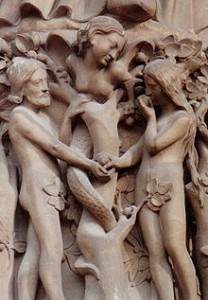 This post has been boiling inside me for a while now. Invariably, when debating controversial issues like eschatology or the doctrine of creation, someone will pull the out the Holy Spirit trump card and act as if it has settled the matter. For instance, someone might argue, “I know the rapture is pretrib because the Holy Spirit led me to this truth.” Of course, to question them further amounts to some sort of blasphemy… But it is an abuse of the Holy Spirit’s role because it amounts to nothing more than an excuse for not offering evidence and arguments for one’s position. Would the hypothetical pretribber have us believe she has more guidance from the Holy Spirit than Charles Spurgeon or John Wesley? It’s just not a good track to take.
This post has been boiling inside me for a while now. Invariably, when debating controversial issues like eschatology or the doctrine of creation, someone will pull the out the Holy Spirit trump card and act as if it has settled the matter. For instance, someone might argue, “I know the rapture is pretrib because the Holy Spirit led me to this truth.” Of course, to question them further amounts to some sort of blasphemy… But it is an abuse of the Holy Spirit’s role because it amounts to nothing more than an excuse for not offering evidence and arguments for one’s position. Would the hypothetical pretribber have us believe she has more guidance from the Holy Spirit than Charles Spurgeon or John Wesley? It’s just not a good track to take.
When Jesus said, “When the Spirit of truth comes, he will guide you into all the truth, for he will not speak on his own authority, but whatever he hears he will speak, and he will declare to you the things that are to come.”(Jn 16:13) It was a promise directed toward the eleven disciples and their role writing the Gospels and the books of the New Testament. It doesn’t mean the Holy Spirit leads us to all mathematical truth, we still have to work lots of problems and gain skill. It also does not apply to interpreting scripture. We still have to struggle to learn biblical languages and history in order to do proper exegesis.
In that regard, I have been debating young earth creationists concerning the traditional misapplication of Genesis one. My main point of contention is that Moses did not write the text with science in mind. Our western scientific worldview was utterly alien to his context. There is a massive socio-historical dvide that needs to be accounted for but is seldom discussed. Fee and Stuart explain, “As people far removed from the religious, historical, and cultural life of ancient Israel, we simply have great trouble putting the words spoken by the prophets in their proper context. It is often hard for us to see what they are referring to and why.” [1] I have been reading In the Beginning… We Misunderstood: Interpreting Genesis 1 in Its Original Context which is an excellent introduction to Moses’ context. The book shows that Moses was addressing Egyptian cosmogony and offering a theological corrective. In fact, the creation sequence in Genesis one corresponds almost directly to the older Egyptian account. It’s too close to be a coincidence. Miller and Soden write, “We are suggesting that Moses is starting with the Egyptian assumptions about creation to correct Israel’s theology of creation and not their way of talking about creation. Moses seems to begin with a starting point that Israel would have already accepted.”[2] In other words, God is using the existing nonscientific beliefs of the ancient Israelites escaping Egyptian bondage to correct their Egyptian indoctrination. It’s not about science.
When I point out that it is superficial exegesis to impose a modern scientific worldview on to Genesis 1… here it comes, the Holy Spirit trump card: “The Holy Spirit told me the earth is young” which fails for the reasons in the first paragraph. But typically it is something more like “He was writing under the inspiration of the Holy Spirit…therefore the text is written for all time.” While it is for all time, it does not mean it is written to a scientific context. The number one rule of hermeneutics is that the original author’s intent for his original readers determines the meaning. Anything else results in relativistic chaos. A responsible Bible interpreter will seek to discover that original intended meaning. This requires some effort like reading scholarly books and employing resources like the Zondervan Illustrated Bible Backgrounds Commentary Set. Invoking the Holy Spirit is not an excuse to ignore that responsibility and it is an abuse of the Holy Spirit’s role. Genesis is “for” all time, but it still was not written “to” you and your modern Western worldview. The meaning of the text is determined by the author’s context and intent not the worldview of readers 3000 years removed.
[1] Gordon D. Fee and Douglas K. Stuart, How to Read the Bible for All Its Worth, 3rd ed. (Grand Rapids, MI: Zondervan Publishing House, 1993), 184.
[2] Johnny V. Miller and John M. Soden. In the Beginning… We Misunderstood: Interpreting Genesis 1 in Its Original Context. (Kregel Publications 2012). Kindle Locations 1209-1210.




